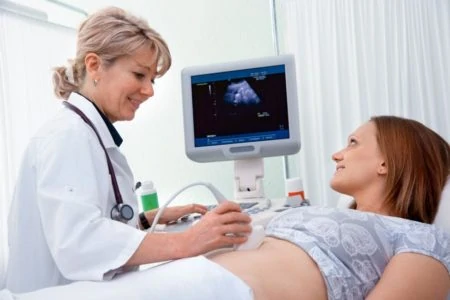While TV dramas and headlines often sensationalize the topic, the reality involves hard numbers and real human stories. We’re cutting through the noise to bring you the facts. This guide breaks down 30 essential teenage pregnancy statistics, covering current trends, global comparisons, and the tangible impacts on young parents and their children.
Here is the truth behind adolescent pregnancy to help you understand the landscape in the U.S. and abroad.
Key Takeaways
- The U.S. teen birth rate hit a historic low in 2022, dropping to 13.5 births per 1,000 females aged 15 to 19.
- Teen pregnancy remains a leading cause of mortality globally for girls aged 15 to 19.
- Disparities exist; birth rates are consistently higher in rural areas compared to urban centers.
- Children born to teen mothers face higher statistical risks of low birth weight and developmental delays.
30 Teenage Pregnancy Statistics and Facts
Teenage pregnancy generally refers to pregnancy in females under the age of 20.
Understanding the numbers does more than just inform you; it helps society provide better support to those navigating early parenthood. We have gathered 30 critical facts across four key categories to give you a clear picture of the situation.
Teen Pregnancy Rates by Year
The landscape of teen pregnancy in the United States has changed drastically over the last few decades. The data below illustrates a steady decline, largely attributed to improved sex education and access to contraceptives.
- 1991: This year marked a peak in recent history, with 61.8 births per 1,000 women aged 15 to 19.
- 1995: The rate began to dip, falling to 56 births per 1,000 women.
- 2000: By the turn of the millennium, the rate decreased to 47.7 births per 1,000 women.
- 2005: The downward trend continued, hitting 39.7 births per 1,000 women.
- 2007: A slight fluctuation saw the rate sit at 41.5 births per 1,000 women.
- 2012: Numbers dropped significantly again to 29.4 births per 1,000 women.
- 2016: The rate fell further to 20.3 births per 1,000 women.
- 2022: Recent CDC data shows a historic low of 13.5 births per 1,000 women aged 15 to 19 (1).
Teen Pregnancy Rates by Country
Geography plays a massive role in reproductive health. Cultural norms, economic stability, and education levels vary wildly across borders. Here is how different nations compare regarding adolescent birth rates.
- Global overview: Approximately 14 percent of adolescent girls worldwide give birth before turning 18 (2). Developing regions typically see higher numbers.
- Romania: Among European nations, Romania has historically held high rates. In 2011, it recorded 61 births per 1,000 women aged 15 to 19 (3).
- Canada: Our northern neighbor sees much lower numbers. In 2022, Canada’s teen fertility rate was 4.4 per 1,000 girls aged 15 to 19, a sharp drop from 10.4 in 2014 (4).
- Mexico: Disparities are evident here. In poorer regions, the rate can be as high as 97 births per 1,000 pregnancies, compared to just 15 per 1,000 in affluent areas (5).
- United Kingdom: England and Wales have seen effective reductions. The conception rate for women under 18 is approximately 13.2 per 1,000 women, down from over 30 in 2011 (6).
- South Korea: This nation has one of the lowest rates globally. In 2021, the birth rate was just two per 1,000 women aged 15 to 19 (7).
- Australia: In 2021, mothers under the age of 20 accounted for only 1.5 percent of all births in the country, a significant decrease from 3.7 percent a decade prior (8).
Risks and Complications of Teen Pregnancy
Adolescence is physically and mentally demanding on its own. Adding pregnancy to the equation creates distinct health and socioeconomic risks. These are eight major complications associated with early pregnancy.
- Maternal mortality: Pregnancy and childbirth complications are the second leading cause of death for girls aged 15 to 19 globally. Young bodies are often not fully developed, increasing the risk of obstructed labor.
- Unsafe procedures: Millions of teenage pregnancies occur annually in regions with limited healthcare. A significant percentage end in unsafe abortions, which can lead to severe infection, injury, or death (9).
- Cycle of poverty: There is a strong correlation between teen pregnancy and socioeconomic status. Teen mothers are less likely to finish high school or college, which limits career opportunities and earning potential later in life.
- Educational impact: Pregnancy is a primary reason for dropping out of high school. Only about 50 percent of teen mothers earn a high school diploma by age 22, compared to 90 percent of women who did not give birth during adolescence.
- Mental health struggles: Teen moms face higher rates of postpartum depression compared to older mothers. The dual stress of navigating puberty and parenthood can be overwhelming (10).
- Prenatal care gaps: Fear, denial, or lack of transportation often delay prenatal care for teens. Missing these appointments increases risks for conditions like high blood pressure and anemia.
- Single parenthood: The vast majority of teen pregnancies occur outside of marriage. In 2020, nearly 90 percent of teen births were to unmarried mothers. This often results in a single income household, increasing financial strain.
- Substance use risks: Research links substance use with higher rates of unintended pregnancy (11). Furthermore, teens who smoke or drink may not stop immediately upon becoming pregnant, posing direct risks to fetal development.
Statistics About Babies Born to Teenage Mothers
The impact of teen pregnancy extends to the child. While many children of teen parents thrive, statistics show they face higher hurdles than their peers born to older parents.
- Academic challenges: Children of teen mothers statistically have lower school achievement and are more likely to drop out of high school themselves (12).
- Physical health risks: Babies born to adolescents are more likely to suffer from low birth weight and preterm birth. These conditions can lead to long-term respiratory or cognitive issues.
- Developmental delays: Early parenthood is a risk factor for delayed social and emotional development in children. The child may score lower on standardized tests during their early school years (13).
- Behavioral issues: Studies suggest these children may face difficulties with self-control and confidence, potentially manifesting as behavioral problems in classroom settings.
- Parenting style: Teen parents, often still maturing themselves, may rely on harsher parenting tactics. High stress levels can reduce patience, leading to increased yelling or spanking.
- Lower Apgar scores: The Apgar test evaluates a newborn’s physical condition immediately after birth. Babies born to teen moms are more likely to score lower (below 7), indicating a need for medical assistance (14).
- Incarceration rates: Data indicates that sons born to adolescent mothers are 2.7 times more likely to face incarceration later in life compared to sons of mothers aged 20 or older (15).
How To Prevent Teenage Pregnancy
Most teen pregnancies are unplanned, but they are preventable. It requires a combination of education, access, and open dialogue.
Here are five effective measures to help reduce teen pregnancy rates:
- Comprehensive sex education: Abstinence-only programs often fail to provide necessary information. Schools need to teach teens about reproductive biology, consent, and the full range of birth control options available to them.
- Access to contraceptives: Teens need confidential and affordable access to birth control. Long-acting reversible contraceptives (LARCs), like IUDs and implants, are highly effective and remove user error.
- Open parental communication: Teens who feel safe talking to their parents are more likely to make responsible choices. Create a judgment-free zone where your child can ask questions about dating and sex.
- Routine healthcare: Regular visits to a pediatrician or gynecologist provide a safe space for teens to discuss reproductive health. These visits can screen for STDs and provide accurate medical advice.
- Community support programs: Regions with high poverty rates often have high teen birth rates. Government and non-profit programs that offer mentorship, after-school activities, and health resources are vital for prevention.
FAQs
In Conclusion
The statistics surrounding teenage pregnancy highlight a clear trend of progress, but also the work that remains. While rates are dropping, the challenges for young parents, from health risks to financial strain, are very real.Understanding these facts is the first step in fostering a supportive environment. Whether through open conversations at home or advocating for better health resources in schools, we can all play a part in ensuring teens have the knowledge and support they need to make informed decisions about their futures.







